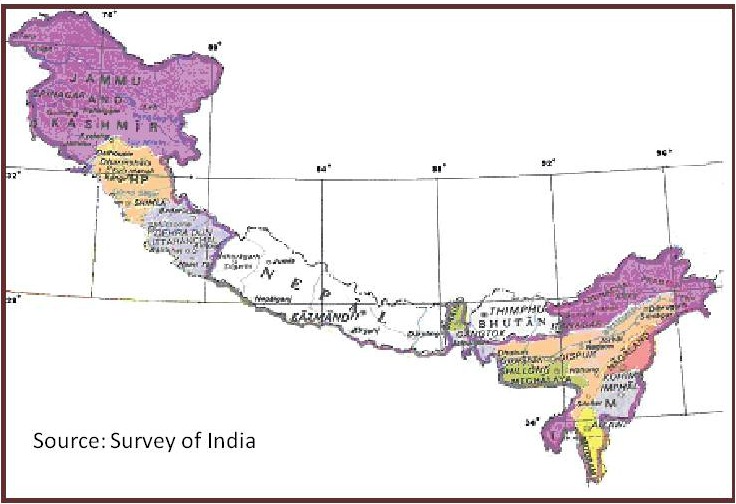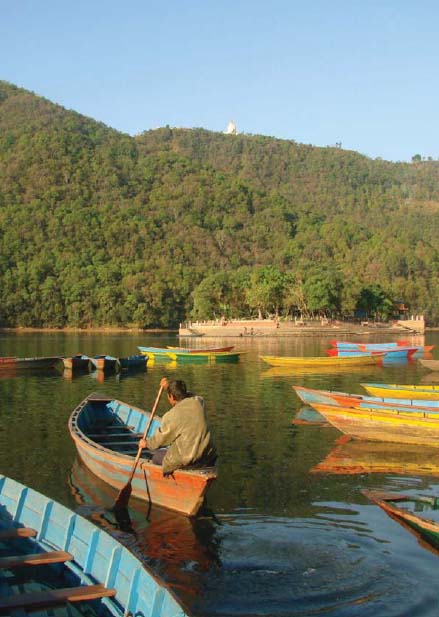/regions/eastern-himalayas
Eastern Himalayas
"Integrate understanding of hydro-geology into planning of watershed management programmes" - A report on the training workshop on groundwater management in the Himalayas, organized by People’s Science Institute, in December 2012 at Dehradun
Posted on 15 Jan, 2013 12:38 AMWhy a training on managing groundwater ?
"Ministry of Environment & Forests held responsible for high levels of pollution in major Indian rivers" - The Resource and Information Network for the Coasts' January 2013 newsletter
Posted on 01 Jan, 2013 10:45 PM

The January edition of the TRINet has the following highlights:
Whose river is it anyway - Political economy of hydropower in the Eastern Himalayas - A paper published in the Economic and Political Weekly
Posted on 25 Jul, 2012 05:38 PMThis paper published in the Economic and Political Weekly, highlights the various debates that have emerged in India the context of the highly controversial issue of large dams being built on the rivers of the eastern Himalayas, the recent campaigns by the people from the Nor
Reviving dying springs: A paper documenting the Sikkim experience of groundwater recharge using geo-hydrology
Posted on 09 Apr, 2012 09:12 AMIntroduction
The paper begins with a description of Sikkim. The sources of water in the Himalayas and the geology of the area are also described.
Literature review of spring related studies
Ignoring precaution, MoEF clears a project which has been categorically rejected by majority Standing Committee of the NBWL
Posted on 26 Feb, 2012 01:31 PMGuest Post : Parineeta Dandekar and Himanshu Thakkar
Inducing vulnerabilities in a fragile landscape: The implications of hydropower development in a seismically active zone - An article in EPW
Posted on 24 Feb, 2012 08:25 PMClose to 30 hydroelectric projects are being planned on the Teesta and its tributaries. Not only is this river an essential part of Lepcha identity and life, but it also flows through a fragile zone. In this article first published in the Economic and Political Weekly (EPW), Kanchi Kohli examines the ramifications of this policy.
Climate variability and change in the Himalayas: Community perceptions and responses - An ICIMOD study
Posted on 22 Feb, 2012 05:30 PMThe general objectives of the assessments were:
Living rivers, dying rivers: Rivers in North East India
Posted on 15 Nov, 2011 03:29 PMRivers in North-East India

Problems of hill states and hill areas and ways to ensure that they do not suffer in any way because of their peculiarities - Report of the Task Force - Planning Commission
Posted on 01 Nov, 2011 09:37 PMThis report by the Task Force, constituted by the Planning Commission, Government of India in April, 2008, is an outcome of the need expressed by the Prime Minister of India for a fresh analysis of the problems of the hill states and hill areas of the country in a manner that suggests that these areas do not suffer in any way on account of their peculiarities.
Opinions have been expressed that the pace of development of the Indian Himalayan Region (IHR) has been slow when compared to the rest of the country. At the same time, its fragile nature and difficulty of taking up conventional development initiatives has not been appreciated. In this report, arguments have been presented recommending reshaping of policies to bring in the “mountain perspective” for the IHR, in the national planning. Emphasis has also been laid on developing norms for good governance and for harnessing social capital at the grassroots.

An inventory of Greater Himalayan wetlands – A manual by ICIMOD
Posted on 27 Oct, 2011 03:00 PM This manual by International Centre for Integrated Mountain Development (ICIMOD) deals with an inventory of Greater Himalayan Wetlands and has been developed to assist governm
This manual by International Centre for Integrated Mountain Development (ICIMOD) deals with an inventory of Greater Himalayan Wetlands and has been developed to assist governm